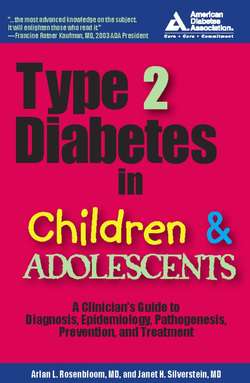Читать книгу Type 2 Diabetes in Children and Adolescents - Arlan L. Rosenbloom - Страница 9
Uncertainties of Classification
ОглавлениеUnfortunately, the distinctions indicated by the features noted above are not as certain as we would like. The clinician is obliged to weigh the evidence in an individual patient for distinguishing between type 1 and type 2 diabetes. There are several reasons for this conundrum.
TABLE 7. Classification of the Types of Diabetes Seen in Children
With increasing obesity in childhood, as many as 20–25% of newly diagnosed type 1 diabetes patients may be obese (16). This will also be true with ADM.
Type 2 diabetes is common in the general population, with a random family history likelihood of ∼15% or greater in minority populations, reducing the specificity of this characteristic.
Positive family history for type 2 diabetes is increased for patients with type 1 diabetes as much as threefold over that of the nondiabetic population, and type 1 diabetes is more frequent in relatives of patients with type 2 diabetes (17).
Genetic interaction between type 1 diabetes and type 2 diabetes is further suggested by HLA haplotype interaction (18) and the finding of islet autoimmunity markers at onset in some children and adults with typical type 2 diabetes, as noted above.
There is considerable overlap in insulin or C-peptide measurements at onset of diabetes and over the first year or so in type 1 and type 2 diabetes because of the recovery phase of autoimmune diabetes (the honeymoon) and the degree of glucotoxicity/lipotoxicity impairing insulin secretion at the time of testing. Elevated C-peptide levels are indicative of type 2 diabetes, but normal concentrations, or suppressed levels in the presence of hyperglycemia, are not diagnostic.
One-third or more of pediatric patients with type 2 diabetes have ketonuria or ketoacidosis at diagnosis (9,19,20).
